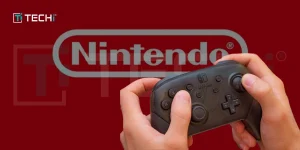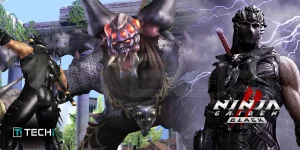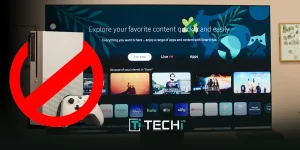Dear Game Publishers, what are you thinking? For years, loyal supporters of your games have dealt with ridiculous price increases, overpriced downloadable content, and silly DRM schemes. Yet now, in these most critical times for the game industry, your idea of repaying them is to make us pay even more? Really?
Furthermore — stooping to an all-time low — EA has stepped up for your industry and decided that users should be pushed (if not forced) to purchase new games only, punishing gamers who legitimately purchase used games. The idea behind this is essential to make them pay extra money for… nothing (or as they put it, “bonus features”, which come with the game when you purchase it anyways).
The fact is that the industry is going through one of its worst downturns in years, proving that the game industry is not recession-proof. This should enlighten you guys as to what is obvious to most: people want more value than ever before. But instead of looking for ways to provide that value to gamers, you look for ways to punish them instead.
So I have a simple question: have you guys lost your freaking minds?
Pushing The Wrong Buttons
The average price for games has gone up over the years: no doubt in response to the massive amount of effort that is required to create these games. But as the initial investment goes up, it shuts out those gamers who would like to play your games but can’t afford to. It also makes people consider their purchases more carefully — driving them to purchase games that can provide the most bang for their buck.
But things have gone wrong. For example: who was the genius that got the brilliant idea that withholding and then selling game content as DLC or expansions would provide more value? Instead of giving your customers the whole experience, some of you specifically plan on releasing that content later as DLC that could have been already been placed in the game. Just another scheme to make more money, right?

But this isn’t The Sims! Eventually, gamers are going to see right through this. And while history would predict that they will pay, regardless of the price. It will still turn even more potential customers away.
Now I haven’t purchased a single computer or console game in well over four years. I have always rented my games from GameFly, and it is worthwhile for me because I typically only play your games for a few hours anyway before I send them back. So if I have managed to avoid paying for your expensive titles for several years now — and I am fully willing to pay for games if I really want them — how do you think millions of other gamers feel about paying for these games?
How many others are there just like me that you have turned away?
It’s no wonder why rentals and used games are so appealing. Hint: it’s your customers telling you something.

But another issue that seems to make you guys steam is piracy. You hate that people acquire, circumvent DRM, and play your games without paying.
But did you ever step back for a moment and question why this happens? Maybe it is the price, of all things, that has been a motivating factor. Maybe if the barrier wasn’t so high, those people who have previously pirated your content would actually pay for it instead, because I am sure that many of them would love to support your efforts.
In case you didn’t notice, the world has been going through some pretty serious economic problems, you know? So, it is time for the industry to adapt.
(Update: Here is a great forum post by Stardock CEO Brad Wardell that goes in-depth about how piracy has impacted PC sales of his company’s titles.)
Second Life
If you want to better yourselves — which you should, before things get worse — you could start off simple.
How about lowering the barrier to entry? You say you want the revenues from a $60 investment per gamer, right? Fine. So why not charge $30 and entice twice as many gamers to shell out the cash for the game? You potentially make the same amount of money (if not more), yet you get significantly more exposure and engagement from gamers. This means more opportunity. And everyone knows how you could (and probably would) exploit that.
(Update: Many have been claiming basic economic theory against my idea of cutting the price in half and doubling the sales. Many are calling me crazy. However, it has been proven to work. Not only that, but sales have exceeded all expectations in these cases. For example, digital distribution platforms like Steam and GamersGate report massive sales boosts by reducing the prices slightly. Paradox Interactive noted a sales increase of 5,500% by temporarily cutting the price by 75% for some of their titles on Steam. That doesn’t sound crazy to me, and game publishers should take notice!)
Downloadable content. You could have developers put more effort into developing DLC, and those gamers who are passionate about your games will almost certainly pay for it. The lower barrier to entry means that more gamers will have the opportunity to purchase this DLC, which could, in turn, eventually result in you making significantly more money than you initially intended! Yes. Making more money! How crazy of an idea is that?

The problem with that is that there will be some of you who urge developers to withhold the development of content to provide a more bare game. Thus, you would require gamers to purchase DLC to have a proper experience. Don’t do it!
And finally, let’s talk about this whole used games mess. Most importantly (before you guys start following EA’s plan to punish those who purchase used games), you could come together to sell used games at a discounted price, while still getting a piece of the pie. Yeah, it is that simple.
Obviously, there are gamers who want to purchase your games without paying full price. They wait and buy used games, resulting in a missed opportunity for you to make money. This also happens at a time when the amount of revenue for your games have probably fallen off quite a bit. So why not provide easily accessible services to compete (or work with) with the likes of GameStop, GameFly, and others to provide used games at a discounted price, thus giving you a way to make money from used game sales? Why not work with the used game market to reap in more profits and sales instead of punishing it?
It makes sense. You make money that you wouldn’t have made otherwise. The gamer gets a great product that can also generate money through DLC. And everyone goes home happy.
(Update: It appears now that EA isn’t the only publisher thinking that they should charge $10 for… well… nothing. Ubisoft is considering charging you an extra $10 as well, simply for purchasing a used game. Every publisher is probably going to adopt this scheme now. So thanks for nothing, EA. Sigh.)
Game Over

But it is clear that things need to change, especially before things get worse.
The game industry is at a critical point where newer technologies are set to be released, being led by the idea of 3D gaming experiences, mobile gaming experiences, and social-aware gaming platforms. It is quite possible that games, as they are known today, will not exist as they are in a few years down the line. And all these plans that you come up with to extract more money from gamers will likely speed up the demise of your industry.
It’s only a matter of time. It happens in every industry, and while the game industry has managed to avoid it, one can’t help but wonder how long that will continue to last.
It can’t. Not unless things change. Not unless you change.





104 User Comments
Jo Diggs
I was looking at a game at Best Buy the other day, $70! Yeah right, are they smoking crack? An hour later I found the same game used at Game Stop $25! Do the math!
Lou
James Mowery
#1
I didn’t want to touch on that topic, because that could be a whole other article in itself. However, you are spot on. Social games and Web-based games are becoming very popular, and many younger gamers are almost spoiled with the amount of gaming they can have for free. From Facebook to Miniclip, there are tons of experiences. And these games are social, which provide more engagement than ever.
It will be interesting to see how it turns out.
Personally, I am very excited to see how the Civilization game coming out for Facebook will work, as I believe it will be watched very closely by other game publishers and developers as well.
James Mowery
#2
You might want to reread my article, as I addressed most of what you have pointed out.
This article does address your first point. I pointed out the fact that the game industry should either compete to enter the rental business or cooperate with GameSpot, as noted in my article. It is obvious that resellers are making tons of money from used games. GameStop, Best Buy, Walmart, GameFly, and many others are already in that market, and they are making a killing.
But what would you prefer the gamer to do: not play the game at all? If a gamer is purchasing used games, it is obviously for a reason: the games are too darn expensive for them or they see greater value from those games.
As for your second point, I also noted this in the article:
“So why not provide easily accessible services to compete (or work with) with the likes of GameStop, GameFly, and others to provide used games at a discounted price, thus giving you a way to make money from used game sales?”
Game publishers are shooting their own selves in the foot in this regard. They can’t blame the retailers — they are geniuses for taking up a space that game publishers are too afraid to enter.
As for your third point, I am mixed, and I also brought this up in the article:
“You could have developers put more effort into developing DLC, and those gamers who are passionate about your games will almost certainly pay for it. The lower barrier to entry means that more gamers will have the opportunity to purchase this DLC, which could, in turn, eventually result in you make significantly more money than you initially intended! Yes. Making more money! How crazy of an idea is that?”
Also, if someone is buying my product and reselling it for twice that much, then the person buying my product is a genius, and I would want to figure out what they were doing. Right? Again, it is a case of game publishers’ greed getting in the way of a great monetization opportunity.
For your fourth point, I disagree completely. In the United States, games have primarily been around $49.99 price range up until 2004 to 2005, when Electronic Arts decided they would experiment with pricing in the $59.99 range. Also, many Nintendo 64 games and PlayStation games were around $30 to $50 range, if I recall correctly. And now we have seen prices approach the $80 to $100 price range with “collector’s editions” and such.
But game publishers obviously want to charge even more. Perhaps we will see prices in the $69.99 range in the coming years.
But DLC and digital distribution is the future. Those publishers/developers who figure out that selling their products at a much cheaper price (thus selling more product) and making up for it in increased engagement with downloadable content sales will come out on top.
Anonymous #2
Developers/Publishers cannot go into the used game market as they will then be competing with their customers. Additionally, there is the HUGE problem of actually building out the services, warehousing, inventory management, accounting, etc. to make it all work. Their only real recourse is to try something different, and that is exactly what they are doing with the bonus content included with new purchases.
This strategy absolutely screws over the gamers that buy used games or use services like GameFly. However, they don’t care because they don’t make any money from these users anyway. This strategy is designed to get money from exactly those gamers that they currently get none from now. And, it has the added bonus of not having a negative impact on the gamers that they do make money from: those gamers that buy new games.
From the developer/publisher perspective: No lose. They will most likely get more money out of this arrangement.
From the gamer perspective (new game buyer): No change at all.
From the gamer perspective (used game buyer): You are going to have to pay more, and that money will go to the developer/publisher when none went there before.
Anonymous
While not to side with any particular evil, but there are some big flaws in this article.
1. The Used Game Market does not actually pay the actual developers, only the resellers pocket the exorbitant profit on it. Places like GameStop pay cost on the product (about $40-45) on the unit, sell it for $59.99 on average. While the meager looking $9 doesn’t look like much, GameStop’s primary goal is to get the purchaser (we will call him Purchaser Alpha) to play it and then return it for trade-in credit. GameStop gives the Purchaser Alpha about $10 to $15 in credit, they buy another game. Then another purchaser (let us call him Beta), Beta comes in and sees that used game, the game that already paid itself off the first time. GameStop is going to charge near full price and gain all the profit off of that. So they take in more than what the actual people who created the game do. And, often, this repeats itself. I have had friends who have worked at GameStops and they can attest to it that most of the profit GameStop makes is in the aftermarket.
2. GameStop recently announced that their huge profits were created by the used game market. It is the reseller that is making the big cash, not the developer. On top of that, most of the money that that does go to the developer has had the publishers hands in it. So in a single run, the publisher will make about $30 a game, the developer will make around $10 to $15 a game, and the reseller will make $60.
3. Imagine if you run a business, you sell say lemonade. While business isn’t thriving, it isn’t going to well. You have few major return customers, but one of them buys a lot of it constantly. Then you turn and find out he has been reselling it at twice the price and is making double your profit. How do you respond to that? Well for the Games Industry, their only current recourse to return maximum profit is Downloadable Content.
4. Actually game prices have stayed rather level over the last decade. If you look back, the most expensive era was the 32-bit/64-bit era. Nintendo 64 games cost about $70-80 a pop (depending on the game). Playstation games were $60, and then dropped down ten dollars in about two years. Meanwhile, Saturn was still at $70-80 a game. 3DO were the same, and so was Jaguar. The only difference now is that they are releasing larger packaging schemes that cost the buyer more. To add to that, they are charging huge prices for DLC that do rack up the overall cost. But at base price, not much has changed.
GamerJoe
1. No secret here, the found the nitch that the game publishers ignored. Maybe they should offer buy-back games.
2. I’ve not heard any complaints between gamers and gamestop about gamestop’s prices
3.a Your example is flawed. Your example would tell me that I have a marketing problem. In your example, if the purchasers of lemonade who were paying double found out about the ability to get it at 1/2 price from me, then they would beat a path to my door. Unless there was a convenience factor involved. But GameStop isn’t buying the games from the publisher and doubling the price. Therefore, it’s a bad analogy.
3.b A more correct analogy would be if Sony was upset that TV buyers were buying last-year’s models for less from eBay instead of the latest, largest, most hyped and over spec’d TVs from a retailer. In this case, what should they do? I’d say work to make them cheaper, drive the price so low that the resale market falls off of the bottom. Look at movie prices for example. Compare the prices of an old release of Terminator vs Avatar.
Elliott
Good article… I agree with you. One point you didn’t cover is how much impact good quality flash games have had on the industry. Is the ever increasing number of quality flash games going to lure players away from purchased games?